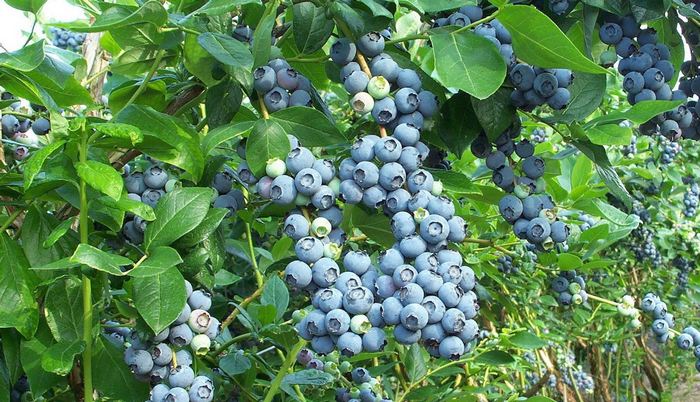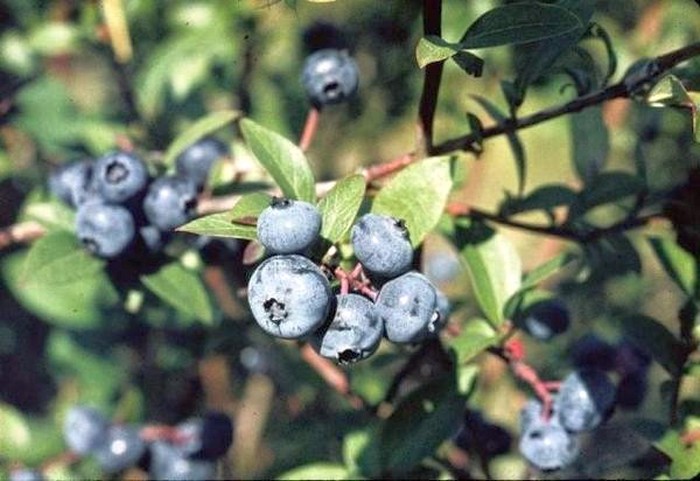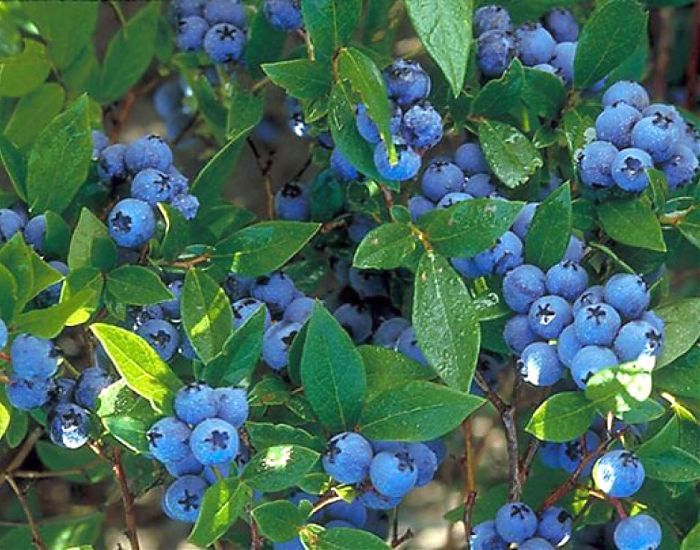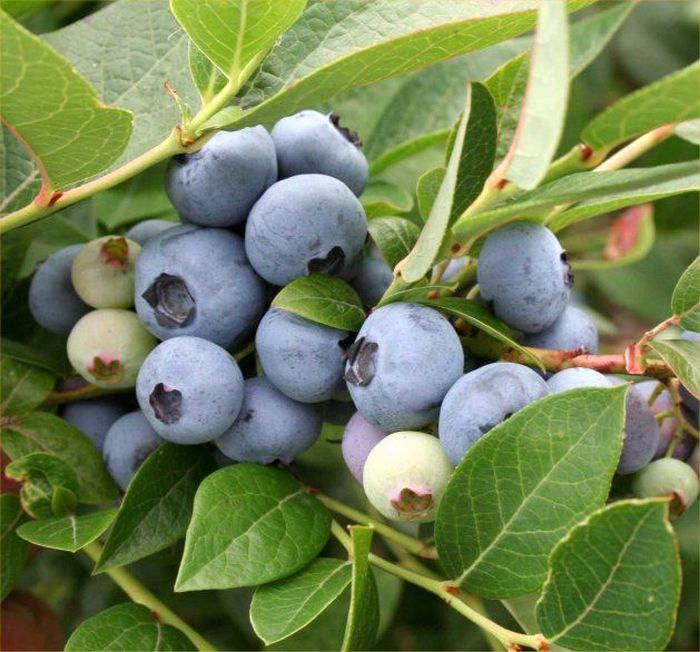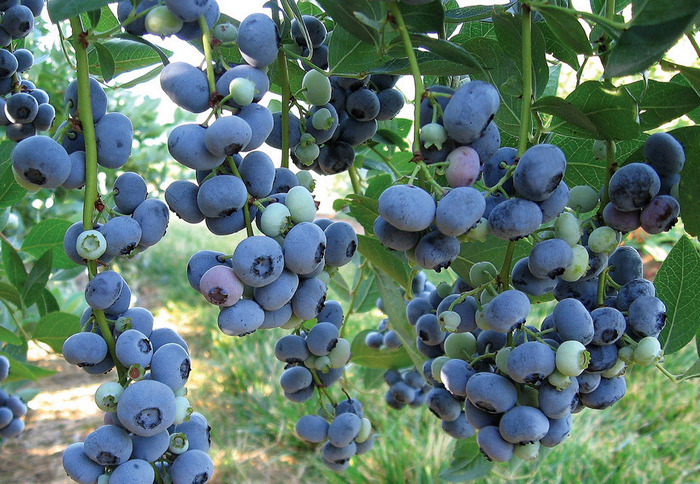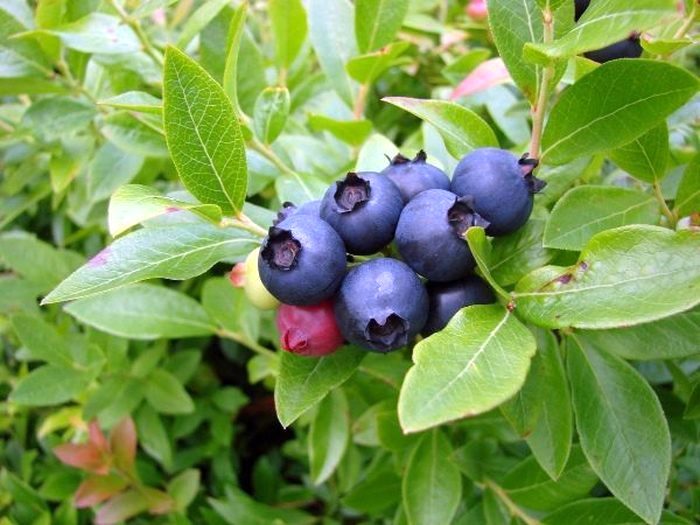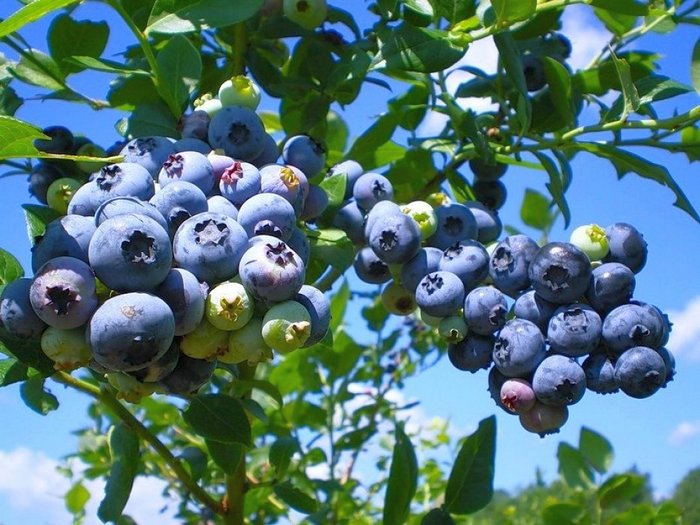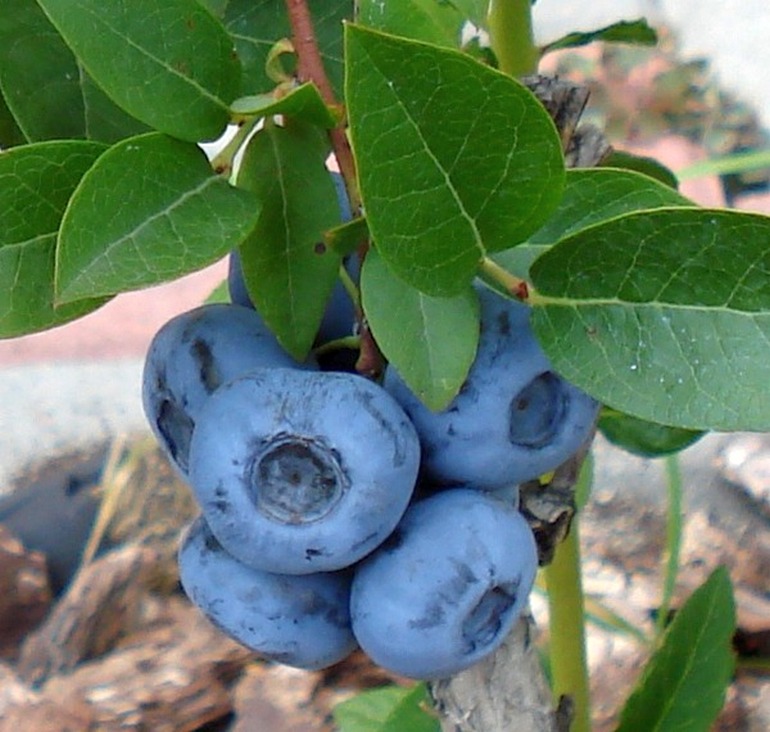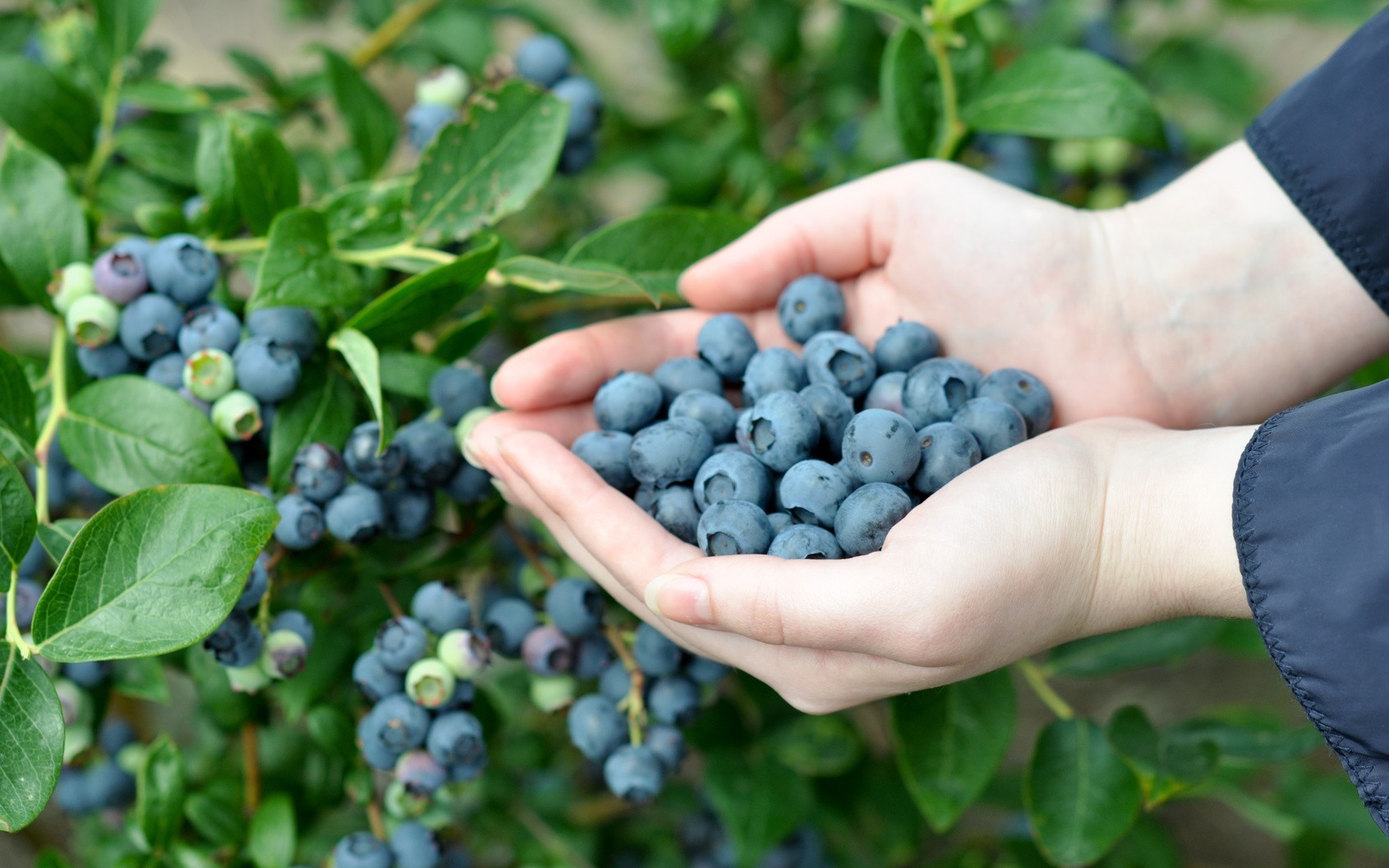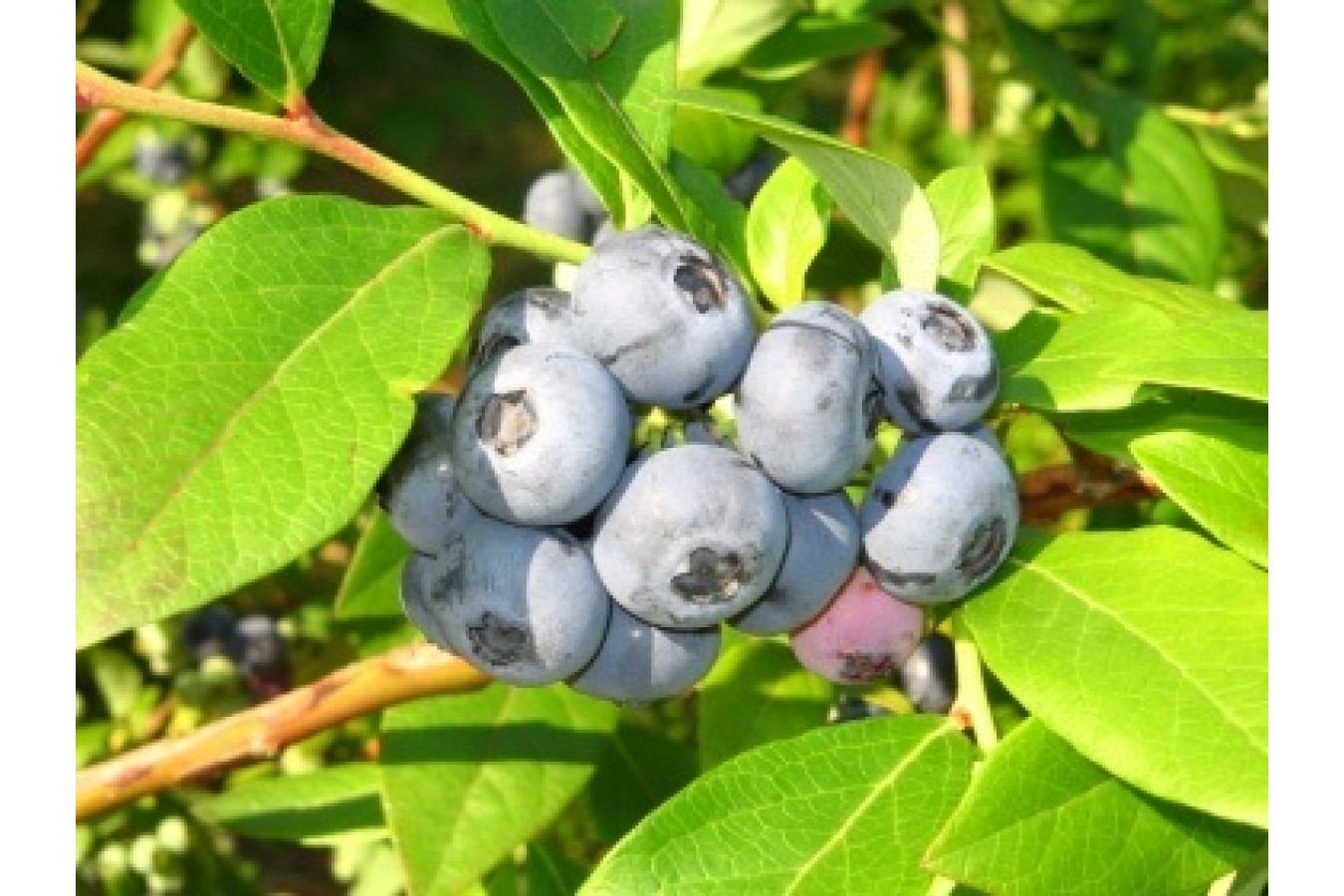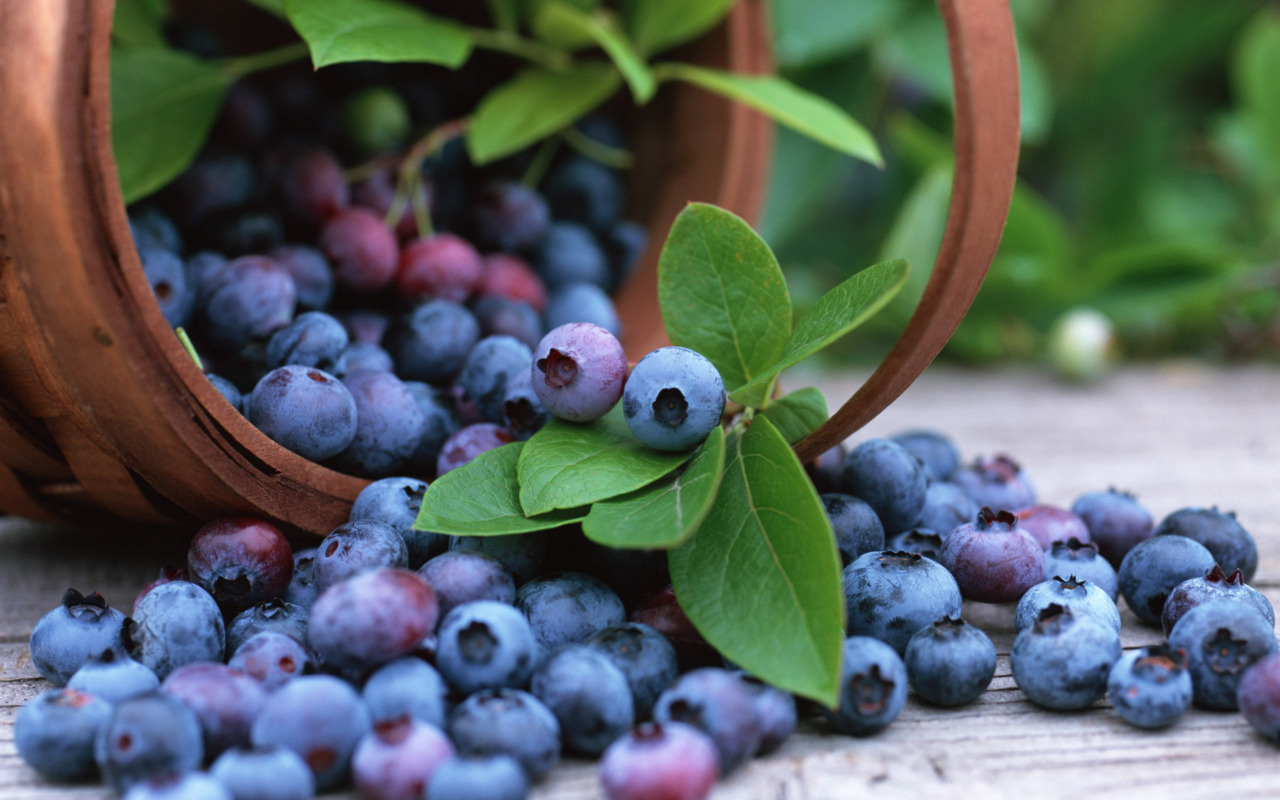Content:
Blueberry is a deciduous fruit shrub from the Heather family. Almost all varieties of the plant flower and bear edible fruits. Wild and domesticated, blueberries are found almost throughout the Northern Hemisphere. In Eurasia, it is actively grown throughout the territory from Great Britain, Ireland and to the Far East and Japan.
About blueberries
The plant is unpretentious in care. Gives preference to acidic soil. It tolerates drought and frost well. Blueberries are highly valued due to their rich content of vitamins (PP, C, A, B2, B1), iron, calcium, phosphorus, organic acids, pectins, tannins. The fruits are widely used in cooking and pharmaceuticals. Like blueberries, black currants, blueberries can be eaten raw, frozen, dried, or added to various dishes. Berries are very fond of children and adolescents, and therefore it is not surprising that blueberries are sometimes used as a character for fairy tales, cartoons and computer games (for example, Anderswap blueberry).
When deciding to plant such a plant in his garden, the owner should first ask which variety is the most successful for a particular region.
Garden blueberry
The first varieties of tall blueberry were developed from the wild varieties of Canada and the United States. Plants of the species grow more than 150-200 cm, are distinguished by good yield and can provide their owner with up to 10 kg of fruits in just one season. At the same time, they also have some disadvantages: they bloom relatively late, have low resistance to frost, and are picky about the soil.
Breeders call the following varieties of the species:
- Berkeley - in adult form reaches a height of 2.1 m, has light green leaves. The fruits are large - up to 19 mm, ripen in mid-August;
- Spartan - an upright variety, with a height of up to 2 m. It has been actively planted in the world since 1977. Ripening of berries occurs relatively quickly, from July. From one bush it is possible to get from 4.5 to 6 kg of fruits;
- Bluecrop - one of the most famous and best-yielding varieties. It has been used by farmers and gardeners since 1944. In one season, it is able to provide up to 9 kg of berries;
- Elliot - an upright bush, can rise to a height of 2 m. The fruits of the plant are light blue and juicy. Although the berries are medium in size, they can be kept fresh even for 12 weeks.
Features of early varieties
Choosing fruit bushes for their garden, the owners are often interested in which variety is the most productive, when blueberries ripen. The early ones are those varieties that allow you to pick their juicy berries in the month of July.
The best representatives of early blueberries are:
- Sunrise - the breeding of the variety took place back in 1991. It is a fairly strong and tall variety. It has large, light blue fruits. In diameter, these can reach up to 20 mm. Provides 4-6 kg of fruits per season;
- Duke - also a tall variety, gives its berries at the end of June. The berry can be up to 15-20 mm in diameter. The fruits have a particularly good taste, so they are recommended to be eaten raw and after cooling;
- Chanticleer - has an average height - up to 1.6 m, has a closed root system, therefore it is grown in pots.Already at the end of June presents the owner with sweet and sour berries;
- Blueberry Alvar (Alawar) - Finnish medium-sized variety. It begins to bloom early, and therefore the fruits are allowed to be harvested in mid-July. Differs in a light sweet aroma;
- Eli Blue - one of the earliest varieties, because its berries are ready for consumption already in the 20th of June. One fruit reaches 18-20 mm in diameter, differs in slight bloom and flattening.
Description of late blueberry
Late is the name of such garden blueberry, the varieties of which ripen in early or mid-autumn. Gardeners call the best varieties of late blueberries:
- Nelson - provides its owner with fruits from the age of four. The bushes of the variety begin to bloom quite late, so you can harvest at the end of September. The fruits are of medium size, a trace of the fruit stem remains on them;
- Dixie blueberry - a bush rich in harvest, with a height of 1.8 m. The berries become suitable for consumption at the beginning of September. They have a sweet, sour taste and a strong aroma;
- Toro - was introduced to the United States back in 1987. The harvest is consistently high every year. The berries are blue in color, smooth on the outside, with a slight scar. But not all fruits ripen together, and therefore it is necessary to harvest in two stages;
- Brigid - the fruits ripen at the end of August. They are characterized by a sweet-sour taste, a large diameter and a long shelf life of more than 10 days.
What is the difference between undersized varieties
Vaccinium angustifolium has become the basis for breeding stunted blueberries. V. Boreale and V. Myrtilloides are partially used. As a rule, these plants are relatively small - up to 1 m, however, they have large berries and are rich in antioxidants. In nature, you can find both early and late varieties. They can differ in fruit color, shoot stiffness, leaf shape.
The most popular varieties of undersized blueberries in Russia are:
- Notblu - the maximum height of the bush is 0.8-0.9 m; gives fruit mainly in August. One fruit can be up to 18 mm in diameter. The yield is stable annually - about 2-2.5 kg. Able to withstand frosts down to -34 ℃;
- Blueberry Chippewa - of the species with short stature, Chippeva blueberry stands out, the description of the variety makes it clear that it grows to a maximum of 80 cm. The berries are light blue in color, endowed with a particularly sweet taste, and therefore are often used to make jam;
- Notland - although not high, however, it is quite strong and lush bush. Already at the beginning of July it gives its first fruits. During the season, the owner collects up to 8 kg of fruits;
- Bluegold - in comparison with other varieties of its kind, high - up to 120 cm. Began to use it since 1988. The fruits ripen relatively quickly and taste sweet and sour.
The best choice for the Moscow region
The Moscow region is a region with harsh climatic conditions. Winter starts here early and is characterized by severe frosts. With this in mind, planting blueberries in open ground should take into account the following two characteristics:
- frost resistance is the ability of a plant to tolerate especially low temperature conditions;
- winter hardiness - resistance to temperature changes during the day and night.
It is worth mentioning the best blueberry varieties for the Moscow region.
Blueberry Jersey
It has small, but very abundant berries. It tastes sweet and sour. The 2m bush is perfect for pollination of other blueberry varieties. Able to withstand temperatures down to -35 ℃.
Rankocas
It grows very quickly. In just 2 years it can reach 1.5-1.8 m in height. Very thick, multiplies quickly. You can expect juicy fruits at the end of summer. The plant is unpretentious in care, however, it really needs pruning.
Northcantry
Relatively small in stature (up to 70 cm), but rather fluffy. The fruit is small in diameter, light in color and sweet in taste. It is possible to collect about 2 kg of crop from one bush.
Chandler
One of those varieties that can curl and reach a length of 1.5 m. The blueberry variety ripens in August and is suitable for temperate climates.
The penultimate and last blueberries are the best varieties for the middle lane, because they withstand especially severe cold, up to -40 ℃.
TOP 10 best blueberry varieties
Extensive experience in gardening has allowed Russian farmers and gardeners to rank the most prolific and resistant varieties:
- Blueberry "Kaz Plishko"... This mid-season variety is the pride of Polish selection. It got its name from the name of the scientist who, in fact, brought it out - Kazimir Plishkevich. Plant height reaches 1.5 m. The shoots of the bush are relatively tough. The berries are dark blue in color, similar to balls. The inside of the fruit is white and has a sweet taste. The average size of a single fruit ranges from 2.5 to 3 cm. Berries ripen simultaneously;
- Blueberry Blue Berry... Summer residents and gardeners fell in love with him for a particularly high yield. Every July, the bush presents its owners with juicy dark fruits. The berries grow medium in diameter. It is possible to collect up to 5-7 kg of fruits from one bush in one year. The plant can withstand up to -35 ℃;
- Blueberry Legacy... Especially productive variety. It has an average ripening period and a lower winter hardiness compared to Blue Berry. The bush itself grows to a height of 2 meters. The fruits are small, however, very tasty. A distinctive feature of the berries is a small scar. They are recommended to be consumed raw. Legacy is a good option for areas with mild winters, and therefore it is sometimes called a southern variety;
- Blueberry Polaris - an invention of US breeders from the University of Minnesota. Differs in special frost resistance, because it was created by breeders for cultivation in 7 climatic zones. Thanks to this, the plant grows well in countries such as: Belarus, the northern regions of Ukraine, the Moscow region and the middle zone of Russia. The height of the variety is 1-1.2 m. The berries are small in diameter - up to 14 mm maximum. During the first year of its existence, the plant yields up to 2 kg, but over the years - up to 7-10 kg;
- Swamp blueberry Is a very popular variety that is often found in Russia, as well as in North America and Europe. This blueberry variety is comparatively short. Maximum it can reach 90 cm. The leaves are small - from 1 to 2 cm. The oblong berries have white flesh. The taste is sweet and sour;
- Blueberry Rankocas... The height of the variety can reach 1.5-1.8 m in height. The berries are of medium diameter, round. They are light blue in color. Loved by the Russians, thanks to its rich aroma and pleasant taste. Berries ripen in most regions of Russia in August;
- Blueberry Sunrise Is a Canadian tall variety. Since the 80s of the last century, it has been actively used on plantations, small and large farms in the United States. The plant reaches a height of 2 m. The fruits themselves differ in size. Fruits of this variety can grow up to 20 cm in diameter. They are usually light blue in color and have a small amount of characteristic bloom. The sweet and sour taste of the fruit opens up to a greater extent after cooling;
- Blueberry jorma - the pride of Finnish breeders. The main advantage that this tall garden blueberry can boast is its good winter hardiness. The berry can be from 1 to 1.5 cm in diameter, sweet taste with a slight acidity. The fruit is very rich in anthocyanins. Gardeners can harvest 2-3 times per season;
- Churon blueberry. The bushes are partly self-fertile. They bloom, in comparison with other varieties, late, therefore they practically do not succumb to the negative effects of pests. The shoots of the plant are erect. It can grow up to 1.6 m. This bush boasts large purple berries with a sweet taste. Providing proper care for her, do not forget that this variety requires cross-pollination;
- Blueberry Blueberry. It has been used in production since 1967. This blueberry is a short and mundane variety.Blueberries of the Bluetta variety grow to a maximum of 1.2 m and give a good harvest. In one season, the owners can collect up to 9 kg of berries from an adult bush. The dark blue fruits of the plant are rated very highly for their taste.
Other varieties
In addition to the previously mentioned varieties of blueberries, it is simply impossible not to recall such plant varieties as: River, Puru, Bludzhey, e1 blueberries, Covill, Nenets fairy tale, blue Scattering, Ivanhoe, Herbert variety, Pink Lemonade, Pink blueberries, Blue Giant, Draper , Boniface, Aurora, Blue Swaid, Big Blue, plainly, Herbert, Stanley, Puru, hardy blue, giant blue, blue diamond, Miller, Sans Yandera, Hannah Choyce, American tall, tall Goldtraube, Sweet Grape, Puru, Giant blueberry, Brigitte, Goldtraube, Chandler, Blau Pearl, Sadovaya Meader, Tophat, Erliblu, Herbert, Sierra, Centechl, Lesnaya, Aino, Concord, Atlantis.
If desired, every gardener can plant such a plant on his territory and annually enjoy the tasty, large and, most importantly, healthy fruits of the bush.
